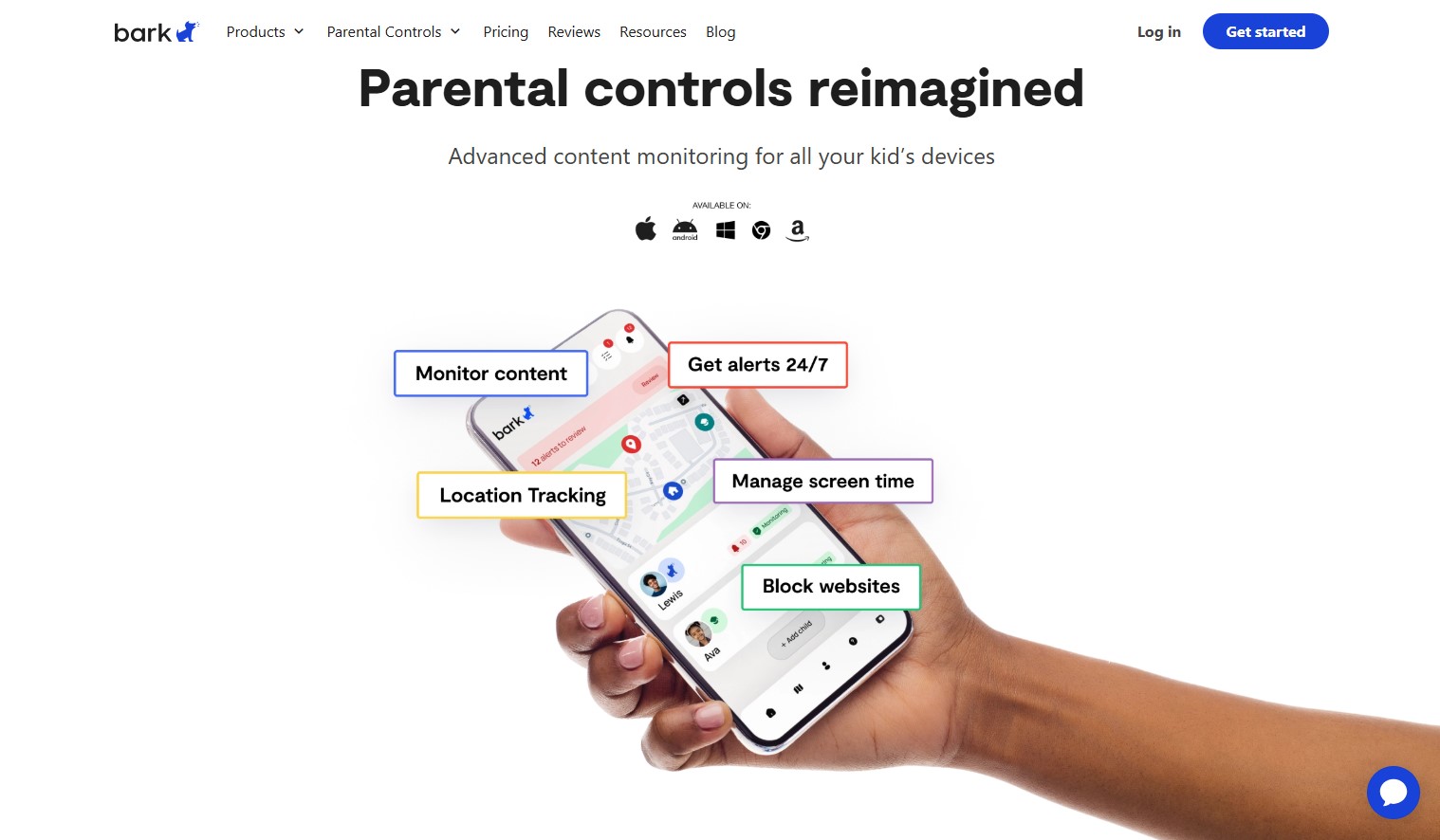Sponsored by Bark
How to teach online safety to kids without fear
Essential tips for safer internet activity

The internet can be rewarding or daunting, depending on the sites and apps you interact with. Kids interact with the internet more than ever, and they need to avoid its daunting parts.
Educating your kids about the risky parts of the internet is necessary, but it can be challenging to do this without getting them scared.
You’ve arrived at the right place if you fall into this category. This guide describes how to teach online safety without making your kids afraid.
Bark: Best parental control for customization
Techradar editors praise the service for its custom controls, "smarter-than-most" app content filtering, as well as SMS and email monitoring. See here for details on Bark's phones and pricing plans.
Preferred partner (What does this mean?)
1. Open communication
Open communication is the key to teaching online safety without scaring your kids. You should have open conversations with them about the internet's merits and drawbacks.
An effective strategy is to focus on empowerment, not distress. Frame safety as a way of empowering themselves while surfing the web, instead of a means to avoid the ever-scary parts of the internet. Let them know that they choose who they talk to and what they share online, and they shouldn’t speak to strangers or post personal information.
“The internet never forgets” remains true. Anything posted has likely been archived somewhere, even when deleted by the user. Hence, teach your kids to think deeply before they post. A popular framing is that they shouldn’t post anything that’ll make them uncomfortable if it appears in a newspaper.
2. Begin with curiosity
You can start your safety conversations with curiosity, not warnings. For example, you can start with questions like "What apps do you use the most?" and "What do you enjoy doing on these apps?" Such questions trigger kids’ curiosities and encourage them to talk about their online activities. Then, you can educate them about the merits and risks of these activities.
Sign up to the TechRadar Pro newsletter to get all the top news, opinion, features and guidance your business needs to succeed!
For instance, if your kid says they enjoy playing games online, you can tell them that while this is a fun activity, it’s necessary to restrict screen time to avoid distractions.
They should know it’s also essential to avoid conversing with strangers in gaming chat rooms and not divulge sensitive information to anyone. You can start with the merits before discussing the risks, similar to the carrot-and-stick approach.
3. Use real-world analogies
Real-world analogies help your kids relate better to what you teach them. For example, "Would you give a random stranger your physical address? No, so you shouldn't do the same online." “Would you be willing to post this information on a public notice board? If not, you shouldn’t post it online.” These analogies help your kids remember and practice what they’ve been taught.
4. Teach responsible online behaviour
You should teach your child responsible online behavior, modeling real-world ethics. People are expected to be kind and respectful to strangers and acquaintances, so it should be the same online. Teach them that online actions affect others, despite the interactions occurring behind a screen.
Responsible online behavior is a baseline that people are expected to follow and receive. Hence, let your kids know that they shouldn’t be victims of cyberbullying and should report such incidents to you for further action.
5. Parental control apps

You can use parental control apps to enforce safe guidelines for your kids. These apps guide your kids towards the safe online habits they’ve been taught.
For example, you can block website categories like gambling and adult content. You can restrict their screen time to prevent distractions and sleep disturbances. Parental control apps can block unsafe sites and downloads from your kid’s device.
6. Use kid-friendly resources
You can use kid-friendly resources to teach online safety in an interactive, fun way. For example, Google’s Be Internet Awesome is a platform that teaches kids online safety tenets via games. Your kids can play these games and interact with the educational curriculum as they progress through levels.
NetSmartKidz is another child-friendly online safety resource. This website features games and interactive videos that teach online privacy in a way kids can relate to. It uses vibrant animations to help kids easily remember what they’ve been taught.
Likewise, Common Sense Media has interactive guides, games, and other resources to teach children online safety. You can watch or read these materials with your kids and provide context to help them understand better. These are examples of valuable resources to teach kids online safety without fear.
7. Make it recurring
Online safety isn’t a one-and-done effort, as new threats constantly emerge, and kids should be taught how to safeguard against them. Make online safety a recurring part of your parental conversations. Discuss new safety habits as your kids interact with new platforms and face new security challenges.
For instance, if your kids start using new school-recommended tools to access information, familiarize yourself with these tools and discuss safety measures. Discuss what data they should and shouldn’t share on these platforms. Talk about how these tools will affect their screen time limits. Safety conversations are a regular part of growing up in a digital world.
8. Model good habits

Arguably, kids learn more from their parents’ habits than words. When teaching online safety, be the model that your kids will emulate. Show your kids respect when conversing with them online. Avoid posting personal details or inappropriate content online.
Use strong passwords when opening accounts, use password managers for families, turn on privacy settings, be careful about downloads, unknown links, etc. Kids who watch their parents adhere to these practices will likely imitate them.
9. Practice online scenarios together
You can practice different online scenarios with your kids, helping them know how to tackle situations they might face online. These scenarios include “What would you do if someone asks for your picture?” “How would you react if a friend posted something demeaning about someone else?” “What would you do if someone posts something mean about you?”
After asking questions, allow your kids to think and respond. If their response is acceptable, commend them for understanding what they’ve been taught.
Correct them on the right steps to take if their response isn't appropriate. These practical scenarios will be more etched in their memory than theoretical lessons.
Stefan has always been a lover of tech. He graduated with an MSc in geological engineering but soon discovered he had a knack for writing instead. So he decided to combine his newfound and life-long passions to become a technology writer. As a freelance content writer, Stefan can break down complex technological topics, making them easily digestible for the lay audience.

